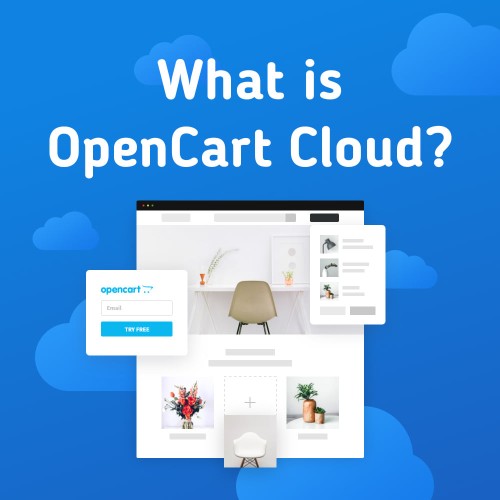Social vs E-commerce: Unveiling the dynamic duo of online business
In the rapidly evolving digital landscape, the online market has becoming comparatively competitive, with the majority of the businesses exploiting the benefits of online product discovery and sales. As a business owner you're probably familiar with the concept of e-commerce and social commerce, however there is a fine line between both sides of the coin, and an in-depth understanding between the two is essential in order to choose the right tools to boost your brand presence within the digital landscape. This article further dives into the core characteristics of each in order to be able to identify the best fit strategy to grow your business.
Exploring E-commerce?
A noticeable trend within the online retail sector, e-commerce is often confused with social commerce however, despite being a traditional tool, e-commerce is highly effective when trying to maximise your brand's potential. In simple words, e-commerce can be inferred as traditional internet shopping. This process or strategy revolves primarily around creating a channel through which customers have the ability to virtually visit your brand's store, discover products of their liking and if pleased buy these products all through your website without having to physically visit brick and mortar stores. Additionally, creating room for customers to choose a secure and preferred mode of payment. Having a dedicated e-commerce website, can be proven complex however, these websites can often be set up in a simple manner with ready to use sales systems easily integrated. When it comes to e-commerce platforms, there are some unique features that make it stand out when compared to social commerce. Let's delve further into these characteristics that make this traditional strategy standout from the rest.
Alt text : Image showing E commerce
Products
The first feature to look into is essentially the product side of the brand. E-commerce platforms give brands the unique ability to showcase their product portfolio in a static format on their website. These product pages give users an idea of the product price, along with support from images to make the purchasing decisions easier.
Secure Payments
Once the customer has identified the product that they wish to purchase, e-commerce platforms have secure and integrated payment options such as Razor pay, debit card payments etc, allowing consumers to make purchases safely from the comfort of their own home.
Real Time order Tracking
Once an order is placed, brands through their online platforms also have the ability to provide customers who have purchased their respective products to track the status and delivery time in real time. Keeping clients involved in the process right from purchase to delivery.
Product Filters
Another standout feature of e-commerce is the ability to provide shoppers with unique product filters, allowing customers to seamlessly find their preferences, be it bestsellers or products preferred uniquely to them.
Profile Creation
When implementing e-commerce strategies, brands are required to implement features such as "profile creation in order to allow shoppers who make repeat purchases, to purchase their favourite products easily while giving the brand access to basic customer credentials allowing them to potentially personalise their products to individual customer preferences.
Exploring the fundamentals of community retail
Taking into consideration the other side of the coin, we have community retail or social commerce. Recently this strategy has evolved with covid times, creating new channels for organisations to promote their products cost effectively without a compromise on organisational reach, while boosting organisational visibility. In simpler words, it is inferred that community retail refers to the implementation of community selling on platforms such as Instagram, Facebook, TikTok, Pinterest, etc, in order to maximise organisations profitability in addition to your brand's already existing e-commerce stores. The reason for the implementation of such as strategy is essentially to give customers the ability to purchase their products through your social media channels, as compared to discovering products on these digital platforms, and having to be re-directed to another channel and purchase from the brands' website. This can be easily done through means such as dedicated marketplaces by these social media platforms.
Similar to traditional online stores, companies can enable users to purchase from them with payment preferences of their choice. These characteristics of community commerce, make it different from e-commerce, as it promotes company growth through showcasing your companies items through the lens of consumers in an interactive and engaging manner. This extensive reach is also due to the fact that users can share their product preferences with their existing following base, creating room for them to organically increase your reach and company loyalty. Keeping this in mind, let's delve further into the two key differences that set both these strategies apart from one another.
Alt text : Image showing social commerce
Differences in marketing approaches
Understanding the importance of search engine optimisation and influencer marketing.
Let's have a look at the standout differences between the two. There are three distinctive features when it comes to marketing strategies, community retail utilises influencer marketing as its primary strategy for visiblity, as while it is cost effective by collaborating with community media influencers, merchandise can be targeted to a wider audience as influencers usually have a strong follower base.
On the other hand e commerce stores prioritise their focuses on search enging optimisation as it gives brands the room to ensure their websites are ranked higher in comparison to their competitors on search engines such as google, yahoo etc. Through this channel brands are able to drave their websites value to larger audience bases.
Exploring the fundamentals of Pay-per-click and User Generated Content
The second point of difference is that often a time e commerce marketing requires a minimal investment in order to promote pay per click campaigns. These campaigns are the most commonly sought after promotional methods for traditional websites. This requirees for brands to bid on key words essentially as they are then further displayed on the targeted results pages.
On the other hand in a more cost effective manner, community retail utilises user generated content as an alternative to these traditional campaigns.This strategy, utilises content generated and promoted by users in the means of posts revieing the products they may have purchased in order to develop a sense of authenticity around the brand.
Harnessing the power of engagement through email marketing and community building.
The final difference is the methods of marketing to promote engagement. Traditional e-commerce strategies focus a lot of their efforts towards email marketing campaigns with an aim to establish personalised touch points and experience for their consumers. These campaigns include product recomendations based on purchase history as well as abandon cart marketing which has a potential of converting customers into recurring ones.
While this may be effective for certain demographs, community retail harnesses real time engagement in order to foster a sense of community amongst their audiences. This is done through direct interactions such as live question and answer sessions, interactions through the commments, etc which builds loyalty around the brand.
Alt text : Image showing community marketing.
The Synergy of E-commerce and Social Commerce
With the highly competitive world of online business taking the world by storm post covid, two superpowers have emerged with unique characteristics and their respective advantages. Both E-commerce and Social retail are often viewed as two somewhat identical sides of the same coin, though both strategies provide businesses with dynamic opportunities to thrive within their target environment. While it is inferred that these unique approaches are not competitors to one another but instead strategies or tools that compliment one another and if implemented adequately and together can establish a highly completive advantage and a world of possibilities.
E-commerce is the hub of online retail, offering a unique and centralised location for consumers to not only discover new goods but also purchase these items or services securely from the comfort of their homes. Inclusive of characteristics such as in depth merchandise listings, secure payment gateways with the ability to track the location of their goods during delivery in real time creates room for traditional shoppers to experience a sense of convenience strongly supported by reliability. As seen, e-commerce has the inherit ability to provide brands with the ability to both customise and have complete control over their ability to personalise experiences for their consumers. Giving individuals, across the globe, the ability to purchase merchandise or services from companies, in e-commerce is powerful, yet only one side of the coin.
The other side of the coin is the recent rising star within this unique digital environment, social retail. Driven through means of real time consumer-brand interactions, content generated by commodity/service users, community marketing is the foundation of social retail. Reliant on the influential impact of social media users, social retail creates significant opportunities to not only foster community engagement, but also potentially reacher larger audiences through virality possibilities. With its unique community marketing strategies in addition to e-commerce, social commerce creates room for an increased sense of brand trust and loyalty with enhanced user experiences.
Both social selling tools offer unique experiences despite their distinctive attributes, though it is crucial to remember that a brand's focus should not be focused on picking between the two, but instead harnessing the unique power with the right synergies between the two can be highly beneficial over implementing just one of the two. With an even balance between the two strategies, companies have the ability to offer experiences that are familiar, to traditional shoppers while focusing on social retail approaches in order to maximise the outreach efficiency that social media platforms have to offer. In turn, building organisational loyalty while efficiently reaching a larger target audience with minimal efforts.
Partners in progress, social commerce and e-commerce if embraced together is the key to unlocking your companies true potential. Utilise this knowledge to successfully navigate the digital landscape with confidence.



Login and write down your comment.
Login my OpenCart Account